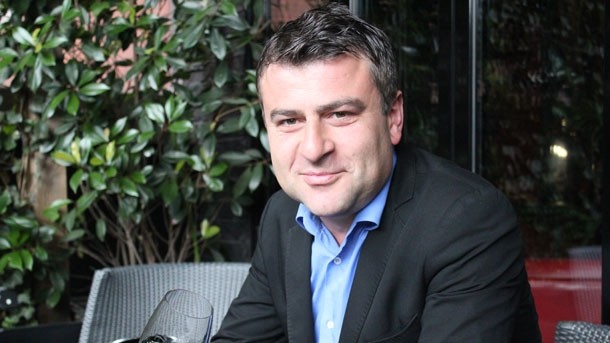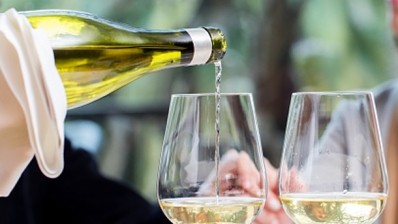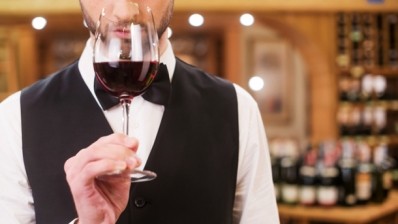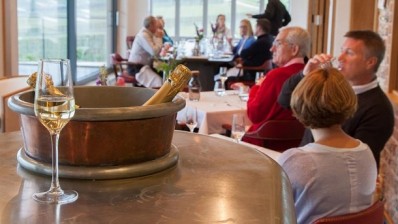VIEWPOINT
Ivo Stoyanov of Joel Robuchon on how restaurants can be more adventurous in their wine choices

You've been defined as an 'unconventional' sommelier, can you explain what that means?
I came to L'Atelier de Joël Robuchon after two and a half years of working at restaurants in the city of London and found that the customer is a different breed here. In the city it's far more obvious in terms of wine choices and also the concept here is different than a conventional restaurant - the menu is made up of lots of small tapas-style dishes and we do a lot of matching wines with them.
Because we have so many smaller dishes it works to offer lots of wines by the glass and doing this gives me a chance to make the list far more colourful in terms of country and producers. For example, we have wines from Eastern Europe which would not normally be a customer's first choice by the bottle, but they would be prepared to try it by the glass.
About 75 per cent of our wines are sold by-the-glass and we have 60 to 70 by-the-glass options. There are different menus offered here - for example we have our budget menus at lunch, then the tasting menu at the first floor restaurant where we have the sommelier's choice options.
When it comes to bottles of wine on our list we are more conventional - France is first, then Italy and Spain while New World wines are difficult to sell by the bottle - but wines from countries like Slovenia, Greece and Austria are pretty much sold by the glass all the time, otherwise they'd just get dusty in the cellar.
So really, selling lots by the glass means we can be more adventurous with our selection.
Selling lots of wines by the glass must mean you have a lot of bottles open at one time, doesn't this cause wastage?
We have the Verre de Vin system here, but the wines do go very quickly so we rarely need to use it. For example this lunchtime I'll have some bottles that were opened yesterday, but not from the day before that.
As the menu is based on tapas sized dishes we offer a half glass for all the matching menus. This allows customers to try more. It allows the sommeliers to offer more suggestions, but it also provides a better experience for the customer, because instead of trying one bottle of red, they can taste seven different reds.
If we do have anything left over and it's not good enough to serve then it goes to the chef or the sink, but in all honesty I don't have a lot of wastage, the sommelier team is very good at selling.
We have five sommeliers here including me and it's great to work with them. It's a dream for a sommelier here because we give most of our colleagues the chance to match wines very quickly.
Young commis sommeliers are generally polishing glasses most of the time, but here we take about two months and then a commis chef will be matching wines. We try hard for them to be involved with everything. They need to start to make decisions at the early stage, it's important. If I was 15 years younger i'd apply straight away here.
What's the most unusual wine on your menu?
I have a Sauvignon Blanc from a vineyard found South West of Slovenia, on the border with Italy on the menu and it's a really fine wine. It's very different from a traditional Sauvignon Blanc, It's not aromatic, fresh and crisp, it's aged in big old oak barrels which gives it a round style, not crisp or aromatic.
What's the next wine region we should be watching with interest?
The region really expecting to become big again is Chianti as they changed the regulations around Reserva and Grand Reserva. I expect to see a lot of serious wines in the next year and for them to build a reputation back up for foodie wines. They are moving to some serious wines that are not going to be pricey, but good quality. I think Chianti is the first in mind these days. You can drink some good Chianti Classico for £10 cost price and they are good value.
Do you have a favourite grape variety?
That's really tough. I'd probably say Cabernet Sauvignon as it needs really good conditions to make a good one. It doesn't like cold nights so the vines need to grow with some limestone to keep the heat. Cabernet Sauvignon is tough to make but when it's great its unbeatable. That's actually a very conventional choice though so I'd say Gruner Veltliner is my favourite unconventional choice. It's really cool. There are a lot of different styles out there. Really, my favourite grape variety is when you make a great wine, that's all.
What is your top food and wine match?
Lobster and rose wine goes together very well. At L'Atelier de Joël Robuchon the chefs use piment d'espellette from the South of France to give a bit of spice to the lobster and langoustines and I think that when you have a nice refined rose from the South of France they go together very well.























